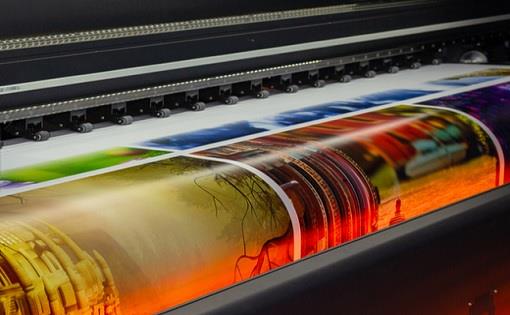Digital Printing Fundamentals Explained
Digital Printing Fundamentals Explained
Blog Article
Things about Digital Printing
Table of ContentsThe 2-Minute Rule for Digital PrintingDigital Printing for DummiesDigital Printing Can Be Fun For AnyoneFascination About Digital PrintingDigital Printing Can Be Fun For AnyoneThe Facts About Digital Printing UncoveredDigital Printing Can Be Fun For EveryoneNot known Facts About Digital Printing
Modification likewise permits companies to attract attention in a congested market by developing distinct marketing materials that separate them from their rivals. Among the primary benefits of digital printing is the capacity to publish variable information. Each published item can be special, enabling companies to create individualized marketing products that talk straight to their target market.Digital printing also permits for personalization in the layout of advertising materials (Digital Printing). With electronic printing, businesses can develop layouts that are special and tailored to their specific requirements.
Fascination About Digital Printing
This advantages organizations that intend to examine various advertising and marketing strategies or release brand-new products and solutions. By printing smaller quantities of marketing products, organizations can lower waste and stay clear of the demand for excess stock. Digital printing is additionally flexible. It can print on different products, consisting of paper, cardstock, vinyl, and metal.
By utilizing different materials and formats, companies can create distinct advertising and marketing materials that attract attention from their competitors and stand out from their target audience. Digital printing additionally uses uniformity. With conventional printing approaches, there is typically variant in between prints due to distinctions in ink coverage, stress, and other elements.
This consistency can help construct customer count on and credibility, showing that business is committed to providing top quality materials. Consistency is particularly important for organizations that intend to develop client trust and integrity. By making certain that every print is constant, services can reveal that they are dedicated to supplying top quality products and focusing on the details.
The Only Guide to Digital Printing

In enhancement, electronic printing creates much less waste due to the fact that it can publish on demand and in smaller sized amounts, reducing the demand for excess stock and products. Digital printing likewise uses less power contrasted to traditional printing techniques. Digital printers do not require as much energy to operate, as they do not need to warm up as much or utilize as much power to run.
Fascination About Digital Printing

Offset printing requires a plate for every shade published. Conventional balanced out printing is a print method that makes use of light weight aluminum plates to move ink onto a rubber sheet (frequently described as a "covering"). The photo is then rolled onto the printing surface area. This printing approach is taken into consideration "balanced out" since the ink is not transferred to check the paper straight.
Digital Printing Things To Know Before You Buy
Countered printing allows for a large range of print materials to be continue reading this made use of during manufacturing. The high-quality pictures generated through balanced out printing make it the preferred technique, specifically among visuals developers, when seeking the biggest shade reproduction, detail, and professional-looking prints.
For digital inkjet printing, ink is transferred straight onto the surface area. Instead than counting on aluminum plates and rubber blankets to transfer an image, digital printing utilizes liquid ink throughout manufacturing.
Some Known Incorrect Statements About Digital Printing
Due to the fact that offset printing can blend custom-made color inks for each work, it will naturally get the shades spot-on. Count on balanced out printing for tidy, unique types and photos without streaks or places.
It costs a whole lot to start an offset work. You need to spend money right into producing the plates, which requires time. Nevertheless, once you have actually invested it, every one of the materials are all set to go, and you'll spend much less on big countered jobs than an electronic print, which has to do with the very same per piece despite how large the job obtains.
Digital printing is less costly for low-volume jobs. The price per system drops for digital printing, so at some point, they crisscross. Altering info within a solitary print task.
Some Known Details About Digital Printing
While digital printing or inkjet printing is the recommended option navigate to this website in the existing times, there are compelling reasons to transform from countered to electronic printing systems. Call Kao Collins concerning shade matching and custom-made formulas. When printing offset or digitally, critical choices and procedures are included in color matching. If it has a visuals overlay or consists of a label, it will have shades.
Whichever the situation, the color will certainly need to be matched. Shade matching of digital printer ink is no longer challenging with dyes and pigments. Industrial inkjet printing offers flexibility for printing on several substrates. Digital printing is suitable for customers that do not need longer runs and warehousing products.

One advantage of electronic printing is choosing from a broad range of digital substratums. With electronic printing, the cost of the substratum in the total work is small.
3 Easy Facts About Digital Printing Explained
drop-on-demand is the second printing technology to take into consideration. Constant inkjet systems require substantial maintenance, more driver training, and greater downtime. Tools expenses in inkjet printing are much lower than countered printing as there are no plate-making, plates, and press costs. Past the capital spending, the prepress devices and printing presses need highly skilled operators in countered printing, which adds labor prices.
Report this page